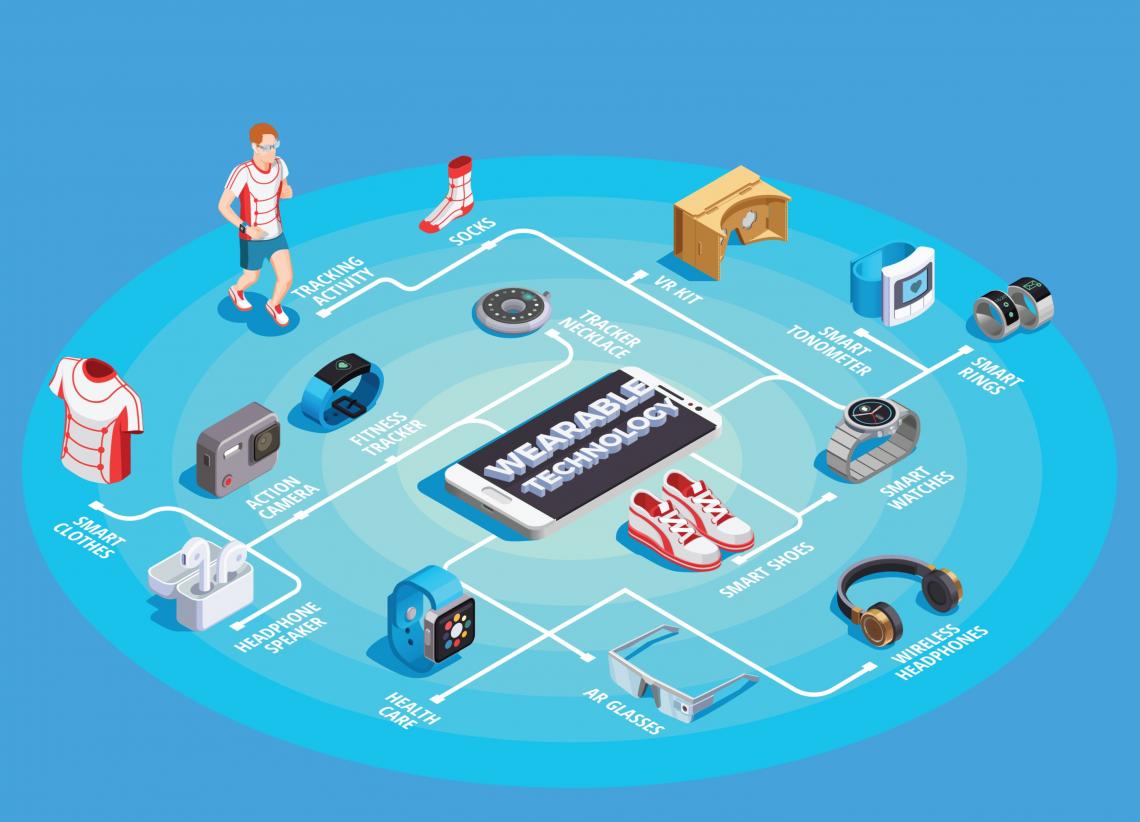(Clockwise from bottom right): Researchers Manisha Sahu, Sugato Hajra, Kyungtaek Lee along with Professor Hoe Joon Kim, who developed a composite film that can be used in energy harvesting generators
The compactness and the small size of these nanogenerators have immense potential in wearable technology that can be powered by biomechanical motion
The push towards low powered, energy-saving devices has been a direction the electronics industry has always pursued. The switch to low powered LED lighting is a good example of this trend. Another avenue is the development of energy harvesting, self-sufficient devices. The idea here is to use materials that display piezoelectric and triboelectric effects to convert mechanical energy into electrical energy. Piezoelectric materials generate an electrical charge when stressed mechanically, while the triboelectric effect is the buildup of charges on two dissimilar materials after they have come in contact with each other.
Piezoelectric nanogenerators (PENG), triboelectric nanogenerators (TENG), and even hybrid piezo-triboelectric energy harvesters (HNG) that have improved energy harvesting capabilities have been developed with the aim to power low-power electronics by simple motion. These devices generally require dielectric materials that retain their polarization, and multiferroic materials that display ferromagnetic and ferromagnetic properties are suitable for this task.
Now in a recent study published in Nano Energy, researchers from Daegu Gyeongbuk Institute of Science and Technology (DGIST), Korea and Indian Institute of Technology, Guwahati, India, develop a composite film that can be used in combination with other materials to produce energy harvesting generators. The composite film was developed using a cost-effective technique where a multiferroic material, bismuth titanate Bi4Ti3O12 (or BiTO), was added to a flexible triboelectric polymer (PDMS). “Our main motivation behind this work was to develop a room-temperature multiferroic material having high colossal permittivity for hybrid piezo-triboelectric energy harvester,” explains Prof. Hoe Joon Kim from DGIST, who led the study. By sandwiching the BiTO-PDMS film between aluminum layers, the researchers fabricated an HNG that generates an electric charge when pressed and released.
But how do these multiple layers generate a current? The answer lies in the properties of the film and its response to mechanical action. The layers function as electrodes and as the device is pressed and released, the piezoelectric and triboelectric nature of the film synergize with each other to generate charges on the electrodes, creating a voltage. This synergistic effect was found to enhance the energy harvesting performance. By using multiple of these HNGs, the researchers constructed a multiunit HNG that was capable of powering a wristwatch and a calculator.
Excited about the significance of the study, Prof. Kim states: “For the first time, the single-phase room-temperature multiferroic material with colossal dielectric constant has been achieved. The internal polarization amplification of the polymer was improved, boosting the energy harvesting performance of the hybrid energy harvester.”
As progress continues to be made to improve the energy harvesting performance of nanogenerators, these tiny devices could one day invalidate batteries in many cases, making electronics more sustainable and self-sufficient.
Reference
|
Authors: |
Sugato Hajra1, Aneeta Manjari Padhan2, Manisha Sahu1, Perumal Alagarsamy 2, Kyungtaek Lee1 and Hoe Joon Kim1* |
|
Title of original paper: |
Lead-free flexible Bismuth Titanate-PDMS composites: A multifunctional colossal dielectric material for hybrid piezo-triboelectric nanogenerator to sustainably power portable electronics |
|
Journal: |
Nano Energy |
|
DOI: |
|
|
Affiliations: |
1 Daegu Gyeongbuk Institute of Science & Technology (DGIST), South Korea 2 Indian Institute of Technology, India |
*Corresponding author’s email: [email protected]
About Daegu Gyeongbuk Institute of Science and Technology (DGIST)
Daegu Gyeongbuk Institute of Science and Technology (DGIST) is a well-known and respected research institute located in Daegu, Republic of Korea. Established in 2004 by the Korean Government, the main aim of DGIST is to promote national science and technology, as well as to boost the local economy.
With a vision of “Changing the world through convergence", DGIST has undertaken a wide range of research in various fields of science and technology. DGIST has embraced a multidisciplinary approach to research and undertaken intensive studies in some of today's most vital fields. DGIST also has state-of-the-art-infrastructure to enable cutting-edge research in materials science, robotics, cognitive sciences, and communication engineering.
Website: https://www.dgist.ac.kr/en/html/sub01/010204.html
About the author
Hoe Joon Kim is currently an Assistant Professor in robotics engineering with DGIST, Daegu, South Korea. He received Ph.D. degrees in mechanical engineering from the University of Illinois at Urbana–Champaign, Urbana, IL, USA, 2015. He held a post-doctoral position at the Micro and Nano Systems Laboratory, Carnegie Mellon University, Pittsburgh, PA, USA, where he was involved in the development of low-power low-noise piezoelectric MEMS resonators for sensing and frequency control applications. His research interests focus on piezoelectric MEMS resonators for RF wireless communication, chemical/physical sensing, and environmental monitoring.



